
JOURNAL OF CERAMIC PROCESSING RESEARCH
Scope & Guideline
Connecting Scholars to Shape the Future of Ceramics
Introduction
Aims and Scopes
- Ceramic Material Development:
The journal emphasizes the synthesis and characterization of new ceramic materials, including advanced ceramics, composites, and nanostructured materials aimed at various applications such as electronics, biomedical devices, and structural components. - Processing Techniques:
Research on various processing techniques such as sintering, casting, and additive manufacturing of ceramics is a core focus, exploring how these methods affect material properties and performance. - Material Performance Evaluation:
The journal includes studies that evaluate mechanical, thermal, electrical, and chemical properties of ceramics under different conditions, contributing to the understanding of their behavior in real-world applications. - Sustainability and Recycling:
A growing area of interest involves the use of recycled materials in ceramic production and the development of eco-friendly processing methods, highlighting the importance of sustainability in the ceramics industry. - Interdisciplinary Applications:
The journal encourages interdisciplinary research that connects ceramic materials with fields like electronics, energy, and environmental engineering, aiming to solve complex problems through innovative material solutions.
Trending and Emerging
- Nanostructured Ceramics:
Research on nanostructured ceramics is gaining momentum, with studies focusing on their unique properties and potential applications in electronics, energy storage, and biomedical fields. - Bioceramics and Biomedical Applications:
There is an increasing trend towards the development of bioceramics for medical applications, including dental and orthopedic implants, driven by the need for biocompatible materials. - Smart Ceramics and Functional Materials:
The emergence of smart ceramics, which exhibit responsive behavior to external stimuli (such as temperature, electric field, etc.), is a trending topic, with applications in sensors and actuators. - Recycling and Waste Utilization:
The utilization of waste materials in ceramic production is becoming a significant focus, addressing environmental concerns and promoting sustainable practices within the ceramics industry. - Advanced Manufacturing Techniques:
Innovations in manufacturing processes, including 3D printing and additive manufacturing of ceramics, are trending topics that reflect the need for more efficient and customizable production methods.
Declining or Waning
- Traditional Ceramic Applications:
Research focusing exclusively on traditional ceramic applications, such as pottery and conventional tableware, seems to be declining as the journal shifts towards more advanced and functional ceramics. - Basic Ceramic Chemistry:
While foundational studies are crucial, there appears to be a reduced emphasis on basic ceramic chemistry without practical applications, as the journal increasingly seeks to publish work with direct relevance to industry and technology. - Historical Studies of Ceramics:
The journal has seen fewer submissions related to the historical and archaeological aspects of ceramics, indicating a potential shift towards more contemporary and applied research themes.
Similar Journals

Elastomers and Composites
Unveiling Insights in Advanced Material SynthesisElastomers and Composites is a leading academic journal dedicated to the advancement of knowledge in the fields of polymer science and materials engineering, specifically focusing on elastomers and composite materials. Published by RUBBER SOC KOREA, this journal serves as a vital platform for researchers and professionals to disseminate innovative research findings and insights in material properties, applications, and synthesis techniques. Although it currently does not offer open access, the journal provides rigorous peer-reviewed content that enhances the global dialogue on elastomeric materials and their composites, reflecting its commitment to high-quality scholarship. With a strong emphasis on practical relevance and theoretical advancements, Elastomers and Composites aspires to reshape industry practices and academic thought, making it an invaluable resource for students, researchers, and practitioners alike. Positioned strategically within its field, this journal fosters collaboration and dialogue among scientific communities, all while supporting the growth of cutting-edge research programs worldwide.
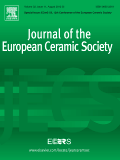
Journal of the European Ceramic Society
Elevating Knowledge in Ceramic MaterialsThe Journal of the European Ceramic Society, published by Elsevier, is a premier academic periodical dedicated to the cutting-edge advancements in the fields of ceramics and composites, as well as materials chemistry. With an impressive impact factor that places it in the top quartile (Q1) of its category, it ranks #33 out of 317 in Materials Science and #16 out of 127 in Ceramics and Composites, showcasing its strong influence in the scientific community. Established in 1989 and set to converge until 2025, this journal serves as a critical platform for researchers and professionals to disseminate their findings, share ideas, and foster collaboration in the rapidly evolving area of ceramic materials. Although it does not offer Open Access options, the journal ensures rigorous peer review and maintains high standards for publication, making it an essential resource for students, academics, and industry experts who are pushing the boundaries of material science.
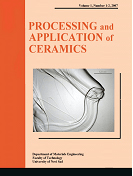
Processing and Application of Ceramics
Transforming Ideas into Ceramic SolutionsProcessing and Application of Ceramics is a prominent open-access journal dedicated to the advancement of knowledge in the field of ceramics and composites. Published by the University of Novi Sad, Faculty of Technology in Serbia, this journal has been fostering research and innovation since its inception in 2007. With its ISSN 1820-6131 and E-ISSN 2406-1034, this journal is indexed in Scopus, where it holds a ranking of #82 out of 127 in the Materials Science category, placing it in the 35th percentile and within the Q3 quartile as of 2023. Spanning a convergence period from 2014 to 2024, the journal serves as a vital platform for researchers, professionals, and students alike, eager to explore the latest developments in ceramic materials, their processing techniques, and practical applications. The journal's commitment to accessibility and quality makes it an essential resource for those aiming to stay at the forefront of ceramics research.
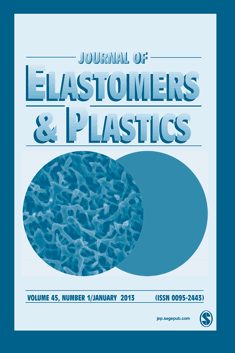
JOURNAL OF ELASTOMERS AND PLASTICS
Elevating Knowledge in Materials ChemistryJOURNAL OF ELASTOMERS AND PLASTICS is a prestigious peer-reviewed journal published by SAGE Publications Ltd that has been at the forefront of material science research since its inception in 1969. Focusing on the fields of Materials Chemistry and Polymers and Plastics, this journal aims to disseminate cutting-edge research that explores the synthesis, characterization, and application of elastomers and plastics in various industries. With a position in the Q2 category for both Materials Chemistry and Polymers and Plastics as of 2023, it showcases significant contributions that push the boundaries of knowledge in these vital areas. Although it does not offer Open Access options, the journal continues to be regarded for its rigorous standards and comprehensive peer-review process. Researchers, professionals, and students in the field will find valuable insights and essential methodologies that can drive innovation and enhance practical applications in elastomers and plastics.
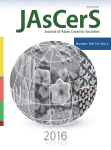
Journal of Asian Ceramic Societies
Connecting minds in the world of ceramics.The Journal of Asian Ceramic Societies, published by Taylor & Francis Ltd, is a peer-reviewed open-access journal that has been at the forefront of ceramic research since its inception in 2013. With an ISSN of 2187-0764, this esteemed journal is dedicated to advancing the scientific understanding of ceramics and composites, bolstered by an impressive ranking of Q2 in the field of Materials Science. Covering a wide range of topics pertinent to ceramics, the journal aims to foster collaboration among researchers, professionals, and students across Asia and beyond. Its commitment to accessibility allows a global audience to engage with cutting-edge research, reflected in its Scopus ranking of #45 out of 127 in the Materials Science category. With a publication timeline extending to 2024, the Journal of Asian Ceramic Societies is an indispensable resource for anyone looking to stay informed on the latest developments and innovations in ceramic technology.
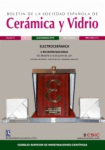
BOLETIN DE LA SOCIEDAD ESPANOLA DE CERAMICA Y VIDRIO
Shaping the Future of Industrial Engineering through Open AccessBOLETIN DE LA SOCIEDAD ESPANOLA DE CERAMICA Y VIDRIO, published by Elsevier, is a premier open-access journal dedicated to advancing research in the fields of Ceramics and Composites, Industrial and Manufacturing Engineering, and Mechanics of Materials. With an impressive impact factor and a strong ranking within its categories—Q2 in 2023 for multiple engineering domains—it serves as a vital resource for academics, industry professionals, and students alike. The journal has embraced an open-access model since 2015, providing widespread accessibility to the latest findings and innovations in ceramic and glass sciences, thus encouraging collaboration and knowledge sharing within the global research community. Published quarterly, and with a focus on interdisciplinary applications, the BOLETIN DE LA SOCIEDAD ESPANOLA DE CERAMICA Y VIDRIO is not only influential in shaping research agendas but also essential for anyone engaged in the evolving landscape of materials science.
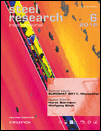
STEEL RESEARCH INTERNATIONAL
Bridging Theory and Practice in Metallurgy.STEEL RESEARCH INTERNATIONAL, published by WILEY-V C H VERLAG GMBH, is a premier journal that serves as a vital source of knowledge in the fields of condensed matter physics, materials chemistry, and metal and alloy research. With an ISSN of 1611-3683 and an E-ISSN of 1869-344X, this journal provides open access options that enhance its visibility and accessibility. Recognized for its scientific merit, it currently holds a Q2 ranking across multiple categories including Condensed Matter Physics and Materials Chemistry. This translates to an exceptional placement within the 64th percentile for Metals and Alloys and substantial recognition in other related fields according to Scopus rankings. By bridging theoretical concepts and practical applications, STEEL RESEARCH INTERNATIONAL aims to foster innovative research and dissemination of knowledge among researchers, professionals, and students focused on advancing the metallurgy and materials science domains. With a commitment to remain at the forefront of research from 2003 to 2024, the journal is poised to continue shaping the future of steel and alloy studies.

REVIEWS ON ADVANCED MATERIALS SCIENCE
Catalyzing Conversations in Condensed Matter PhysicsREVIEWS ON ADVANCED MATERIALS SCIENCE, published by De Gruyter Poland SP Z O O, is a preeminent open-access journal dedicated to disseminating cutting-edge research in the fields of condensed matter physics, materials science, and nanoscience. Since its inception in 2003, the journal has established itself as a crucial platform for scholars and practitioners to share innovative insights and advancements, achieving a commendable Q2 ranking in its respective categories for 2023. With its headquarters in the Russian Federation, the journal is not only committed to expanding the frontiers of scientific knowledge but also emphasizes inclusivity through its open-access model, which has been in effect since 2019, enabling universal access to its high-quality content. With an impactful standing illustrated by its Scopus rankings—136th in Condensed Matter Physics and 186th in General Materials Science—REVIEWS ON ADVANCED MATERIALS SCIENCE stands as a vital resource for researchers, professionals, and students eager to engage with contemporary discussions and discoveries in materials science.

Transactions of the Indian Ceramic Society
Elevating Understanding in Materials ScienceTransactions of the Indian Ceramic Society is a distinguished journal published by Taylor & Francis Ltd, focusing on the vital field of ceramics and composites. With an ISSN of 0371-750X and an E-ISSN of 2165-5456, this journal serves as a crucial platform for disseminating cutting-edge research and innovations in ceramic materials science. Operating since 1941, it has established a solid reputation within the academic community, currently holding a Q3 ranking in the Ceramics and Composites category according to the 2023 Scopus rankings. Though not an open-access journal, it provides a wealth of insights and findings that can significantly impact both theoretical and practical applications in materials science. The journal aims to facilitate knowledge exchange among researchers, professionals, and students, thereby pushing the boundaries of what is possible in the world of ceramics. It is a valuable resource for anyone looking to advance their understanding and contribute to this ever-evolving field.
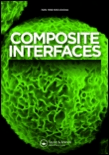
COMPOSITE INTERFACES
Fostering Excellence in Composite Research and ApplicationsComposite Interfaces is a prominent journal dedicated to advancing the scientific understanding and applications of composite materials and interfaces, published by Taylor & Francis Ltd. Since its inception in 1993, this journal has become a pivotal resource for researchers and practitioners in the fields of ceramics and composites, as well as in physics and materials sciences. With a commendable Q2 ranking in 2023 across multiple categories, including Ceramics and Composites, Physics and Astronomy, and Surfaces, Coatings and Films, Composite Interfaces ensures a high standard of scholarly excellence, reflected in its robust Scopus rankings. While the journal operates under a subscription model, its influential body of work is vital for those seeking to innovate in composite material applications. By fostering scholarly communication, Composite Interfaces plays a crucial role in the progression of material science, an area of increasing relevance in technology and engineering.